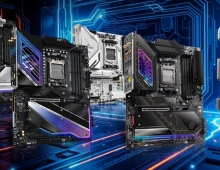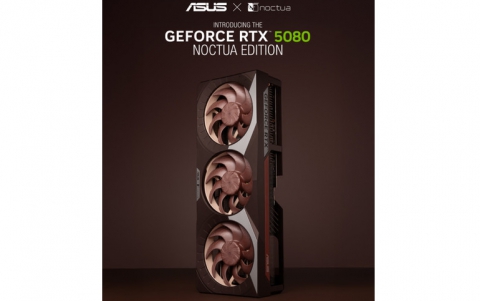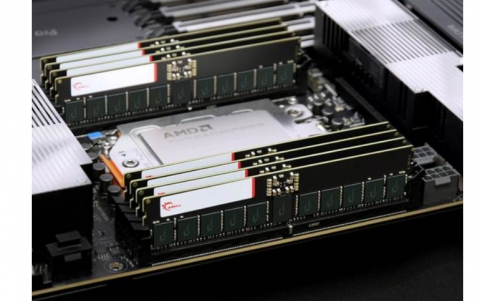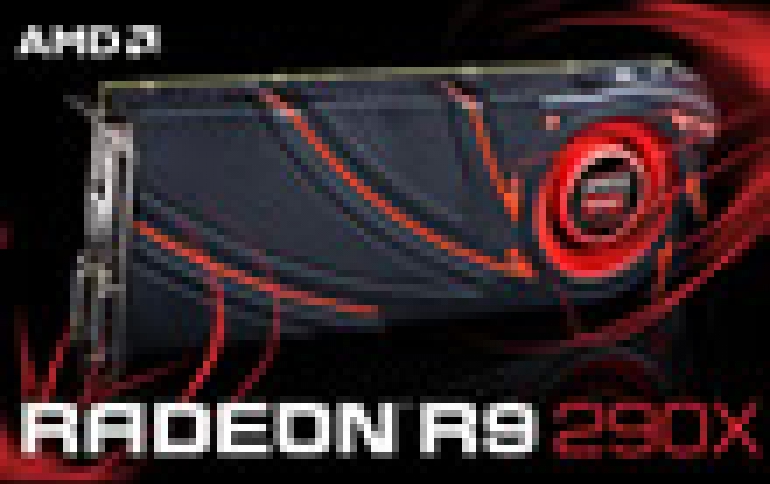
AMD Radeon R9 290X Released And Takes On Nvidia's TITAN
AMD's partners have officially released their Radeon R9 290X implementations and it seems that the new flafship card delivers a great value for money, effectively competing with Nvidia's GTX 780 and TITAN offerings.
After hosting a public GPU showcase in Hawaii just under a month ago, AMD has already launched the first five cards in the Radeon 200 series - the 280X, 270X, 260X, 250, and 240. But AMD has saved the best for last: the Radeon R9 290X.
The 290X is the only new GPU in AMD's latest generation of video cards. Dubbed Hawaii, the new 28mnm GPU is bigger than the Tahiti and brings some new features to the family.
Hawaii is a GCN 1.1 part and features four geometry processor and rasterizer pairs, up from two on Tahiti, while on the back end we're now looking at 64 ROPs versus Tahiti's 32. Meanwhile in the computational core AMD has gone from 32 CUs to 44, increasing the amount of shading/texturing hardware by 38%.
AMD is shipping the card with a maximum boost clock of 1GHz, which means any significant performance gains will come from the larger number of functional units. It has a 512-bit memory bus paired up with 5GHz GDDR5, which brings the total amount of memory bandwidth to 320GB/sec.
The 438mm2 GPU includes 6.2B transistors and some changes to the power consumption of the silicon (reduced transistor leakage) result to a reduced power consumption of the GPU. AMD quotes an average gaming scenario power of 250W, although real tests rate the card just under the 300 Watt.
As we previouls siaid, the Radeon R9 290X reference design carries a 1000MHz GPU clock, a 1250MHz memory clock, and 4GB of DDR5 memory. It boasts 2816 graphics cores and a 512-bit memory interface. It occupies a single PCIe x16 slot. One eight-pin and one six-pin power connector serve to power the card.
The Radeon R9 290X also includes two BIOS settings. A physical switch on the card lets you toggle between them. 'Quiet' mode caps performance and fan speeds to produce a quieter experience. 'Uber' mode aims for optimal performance, regardless of the level of noise that results.
Multiple-graphics-card enthusiasts wlill appreciate the lack of CrossFire bridges. With the Radeon R9 290X, you can set up two cards in CrossFire mode simply by installing them on the same motherboard.
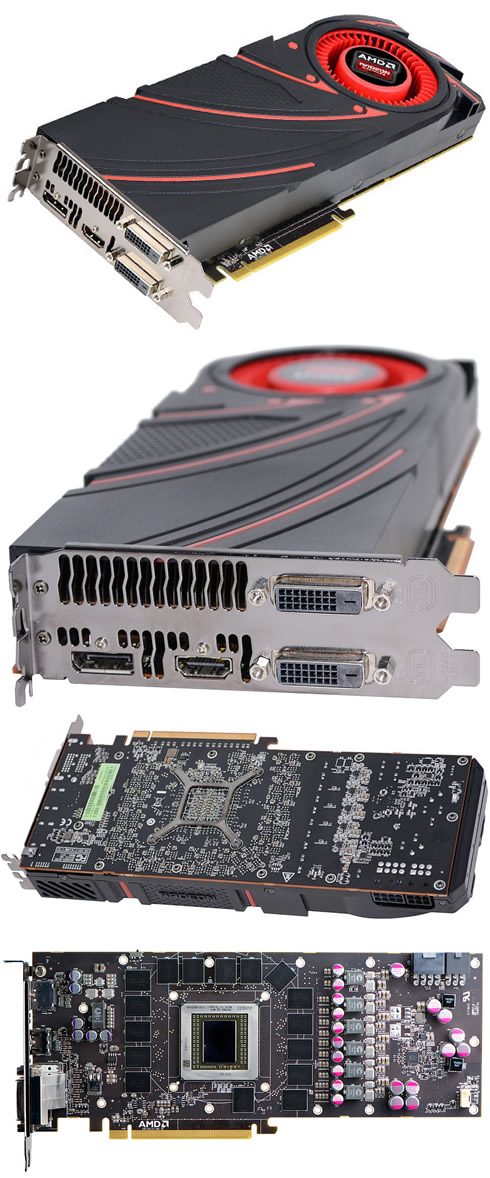
AMD's reference design also provides two DVI-I connectors, one HDMI port, and one DisplayPort on the mounting bracket. Using AMD's EyeFinity multimonitor technology, you can connect as many as six displays to a single graphics card. GPUs in the Radeon R9 family now support up to three HDMI or DVI displays, and the rest via the DisplayPort or DisplayPort adapters. There are some limitations, however: All the displays must support identical timings, for instance, and you must configure the display clocks and timing when booting the PC.
The price AMD will be charging for this top tier is $549. This is about $250 more expensive than 280X, with the 290X offering an average performance increase over 280X of 30%. But when placed against NVIDIA's lineup the primary competition for 290X will be the $650 GeForce GTX 780, a card that the 290X can beat, according to the first reviews that have appeared online.
Speaking of reviews, AMD seems to offer a great value as it have managed to compete with NVIDIA's big flagship GPUs with the R9 290X, offering performance competitive with GTX Titan and GTX 780.
In 4K resolutions, nearly every game (enxcept Crysis 3) seems to run at a playable 30 fps or better at Ultra quality.
At the resolution of 2560x1440, the R9 seems to be tied with GTX Titan, delivering the same performance of NVIDIA's TITAN flagship card. Against NVIDIA's GTX 780, the 290X leading by an average of 10%.
However, it seems that AMD has focused on performance so it had to push quite a bit of power through 290X.
NVIDIA's response will be the already announced a GTX 780 Ti for next month. NVIDIA will also have their 3 game Holiday GeForce Bundle starting on the 28th.
The 290X is the only new GPU in AMD's latest generation of video cards. Dubbed Hawaii, the new 28mnm GPU is bigger than the Tahiti and brings some new features to the family.
Hawaii is a GCN 1.1 part and features four geometry processor and rasterizer pairs, up from two on Tahiti, while on the back end we're now looking at 64 ROPs versus Tahiti's 32. Meanwhile in the computational core AMD has gone from 32 CUs to 44, increasing the amount of shading/texturing hardware by 38%.
AMD is shipping the card with a maximum boost clock of 1GHz, which means any significant performance gains will come from the larger number of functional units. It has a 512-bit memory bus paired up with 5GHz GDDR5, which brings the total amount of memory bandwidth to 320GB/sec.
The 438mm2 GPU includes 6.2B transistors and some changes to the power consumption of the silicon (reduced transistor leakage) result to a reduced power consumption of the GPU. AMD quotes an average gaming scenario power of 250W, although real tests rate the card just under the 300 Watt.
As we previouls siaid, the Radeon R9 290X reference design carries a 1000MHz GPU clock, a 1250MHz memory clock, and 4GB of DDR5 memory. It boasts 2816 graphics cores and a 512-bit memory interface. It occupies a single PCIe x16 slot. One eight-pin and one six-pin power connector serve to power the card.
AMD GPU Specifications |
||||
| AMD Radeon R9 290X | AMD Radeon R9 280X | AMD Radeon HD 7970 | ||
| Stream Processors | 2816 |
2048 |
2048 |
|
| Texture Units | 176 |
128 |
128 |
|
| ROPs | 64 |
32 |
32 |
|
| Core Clock | N/A |
850MHz |
925MHz |
|
| Boost Clock | 1000MHz |
1000MHz |
N/A |
|
| Memory Clock | 5GHz GDDR5 |
6GHz GDDR5 |
5.5GHz GDDR5 |
|
| Memory Bus Width | 512-bit |
384-bit |
384-bit |
|
| VRAM | 4GB |
3GB |
3GB |
|
| FP64 | 1/4 |
1/4 |
1/4 |
|
| TrueAudio | Y |
N |
N |
|
| Transistor Count | 6.2B |
4.31B |
4.31B |
|
| Board Power | ~280W |
250W |
250W |
|
| Manufacturing Process | TSMC 28nm |
TSMC 28nm |
TSMC 28nm |
|
| Architecture | GCN 1.1 |
GCN 1.0 |
GCN 1.0 |
|
| GPU | Hawaii |
Tahiti |
Tahiti |
|
| Launch Date | 10/24/13 |
10/11/13 |
12/28/11 |
|
| Launch Price | $549 |
$299 |
$549 |
|
The Radeon R9 290X also includes two BIOS settings. A physical switch on the card lets you toggle between them. 'Quiet' mode caps performance and fan speeds to produce a quieter experience. 'Uber' mode aims for optimal performance, regardless of the level of noise that results.
Multiple-graphics-card enthusiasts wlill appreciate the lack of CrossFire bridges. With the Radeon R9 290X, you can set up two cards in CrossFire mode simply by installing them on the same motherboard.

AMD's reference design also provides two DVI-I connectors, one HDMI port, and one DisplayPort on the mounting bracket. Using AMD's EyeFinity multimonitor technology, you can connect as many as six displays to a single graphics card. GPUs in the Radeon R9 family now support up to three HDMI or DVI displays, and the rest via the DisplayPort or DisplayPort adapters. There are some limitations, however: All the displays must support identical timings, for instance, and you must configure the display clocks and timing when booting the PC.
The price AMD will be charging for this top tier is $549. This is about $250 more expensive than 280X, with the 290X offering an average performance increase over 280X of 30%. But when placed against NVIDIA's lineup the primary competition for 290X will be the $650 GeForce GTX 780, a card that the 290X can beat, according to the first reviews that have appeared online.
Speaking of reviews, AMD seems to offer a great value as it have managed to compete with NVIDIA's big flagship GPUs with the R9 290X, offering performance competitive with GTX Titan and GTX 780.
In 4K resolutions, nearly every game (enxcept Crysis 3) seems to run at a playable 30 fps or better at Ultra quality.
At the resolution of 2560x1440, the R9 seems to be tied with GTX Titan, delivering the same performance of NVIDIA's TITAN flagship card. Against NVIDIA's GTX 780, the 290X leading by an average of 10%.
However, it seems that AMD has focused on performance so it had to push quite a bit of power through 290X.
NVIDIA's response will be the already announced a GTX 780 Ti for next month. NVIDIA will also have their 3 game Holiday GeForce Bundle starting on the 28th.







